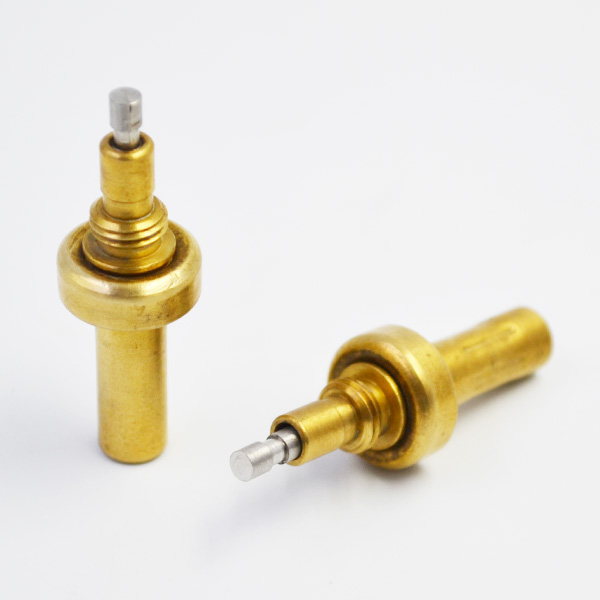The dynamic model of active suspension of monorail vehicle is established based on Darumbell’s principle. The LQG controller of active suspension of monorail vehicle is designed by applying stochastic linear optimal control theory and taking ride comfort and grounding as comprehensive evaluation indexes. The objective function including vertical acceleration of vehicle body, dynamic travel of suspension and dynamic load of tire is established. The corresponding simulation model is established in MATLAB/Simulink. The road roughness is generated by white noise through integrator as the input of the system model, and the characteristics of active and passive suspensions are compared and analyzed. The results show that the performance of active suspension with LQG controller is better than that of passive suspension. Suspension is one of the important assemblies of vehicles, which can transfer all forces and moments between wheels and body, and attenuate the vibration impact caused by road roughness.
Conventional passive suspension has no energy supply device.

Suspension stiffness and damping can only adapt to certain loads and certain road conditions and vehicle speed. Therefore, vehicle ride comfort under different road conditions and load conditions is inferior to that of parametric adjustable suspension. Active suspension is equipped with active actuator, which can produce the optimal control force according to the input parameters, so that the suspension has good vibration reduction performance, thereby improving the ride comfort and grounding performance of vehicles. The core part of active suspension is control algorithm. Choosing different control algorithms and modes will produce different control effects. There are many kinds of control algorithms, such as PID control, Fuzzv control, Ro-bus control, sliding mode variable structure control, predictive control, genetic algorithm control, neural network control and adaptive control, but stochastic linear quadratic optimal control is widely used in active suspension design.
The active suspension model of monorail vehicle is shown in Figure 1. In Figure 1, MB is body mass, mwf, mWr is front and rear wheel mass, cf, Cr is front and rear suspension damper damping coefficient, ksf, KSR is front and rear suspension stiffness coefficient, ktf, KTR is front and rear suspension stiffness coefficient, J is body inertia, uf, ur is front and rear suspension actuator control force, a, B is the distance from front and rear suspension to vehicle body center, XB is vertical displacement of vehicle body center, Xbf, Xbr is vertical displacement of front and rear suspension, xwf, xwr is vertical displacement of suspension.
The vertical displacement of front and rear tires, XFF and XRR are road excitation inputs, theta is car body pitch angle and V is vehicle speed. The main performance indicators of ride comfort in automobile suspension design include vertical vibration acceleration of body center representing ride comfort, suspension travel related to structure design and layout, and tire dynamic displacement representing tire grounding. Therefore, the performance target index in LQG controller design should include dynamic displacement of tire, thermostatic element dynamic deflection of suspension and acceleration of vehicle body. The expression is as follows: P1 is the weighting coefficient of vehicle acceleration, P2 is the weighting coefficient of pitching angle acceleration, Q1, Q3 is the weighting coefficient of dynamic displacement of front and rear tires, Q2, Q4 is the weighting coefficient of dynamic deflection of front and rear suspension.
Formula (8) can be obtained by matrix transformation: X and U are state variables and control input matrices respectively; Q is state weighted positive definite matrix; R is control weighted positive definite matrix; IV is control and state weighted matrix; q = diag (p1, p2, q1, q2, q3, q4). The simulation parameters and symbols of Ford Cranada are shown in Table 1.
The weighting coefficients P1 = 1, P2 = 1, Q1 = 80000, Q2 = 100, Q3 = 80000, Q4 = 100 were taken as performance indicators. X=(A-BK)X EW. U=-KK. The active suspension model of monorail vehicle is built in Simulink module of Matlab software, as shown in Figure 2. According to the established model, algorithm and parameters, the simulation is carried out in at-lab/Simulink, and the active suspension controlled by LQG is compared with the corresponding passive suspension. The simulation results are shown in figs. 4-6. Quantitative analysis can be carried out in MATLAB, and root mean square values can be calculated and compared. The results are shown in Table 2.
From the above charts, it can be seen that the performance of active suspension with LQG controller is better than that of passive suspension with the same parameters. The maximum and root mean square values of centroid acceleration, pitch acceleration, front and rear suspension dynamic deflection and front and rear tire dynamic displacement are all reduced. By comparing the active suspension and passive suspension of Ford Granada, the maximum of centroid acceleration, pitch angle acceleration, front and rear suspension dynamic deflection, front and rear tire dynamic displacement and root mean square value can be reduced by using the active suspension with stochastic linear optimal control, which can improve ride comfort, ride comfort and handling stability of the vehicle.

For suspensions with different parameters and structures, the optimal controller can be obtained by changing the weighting coefficients of suspension performance indexes.
